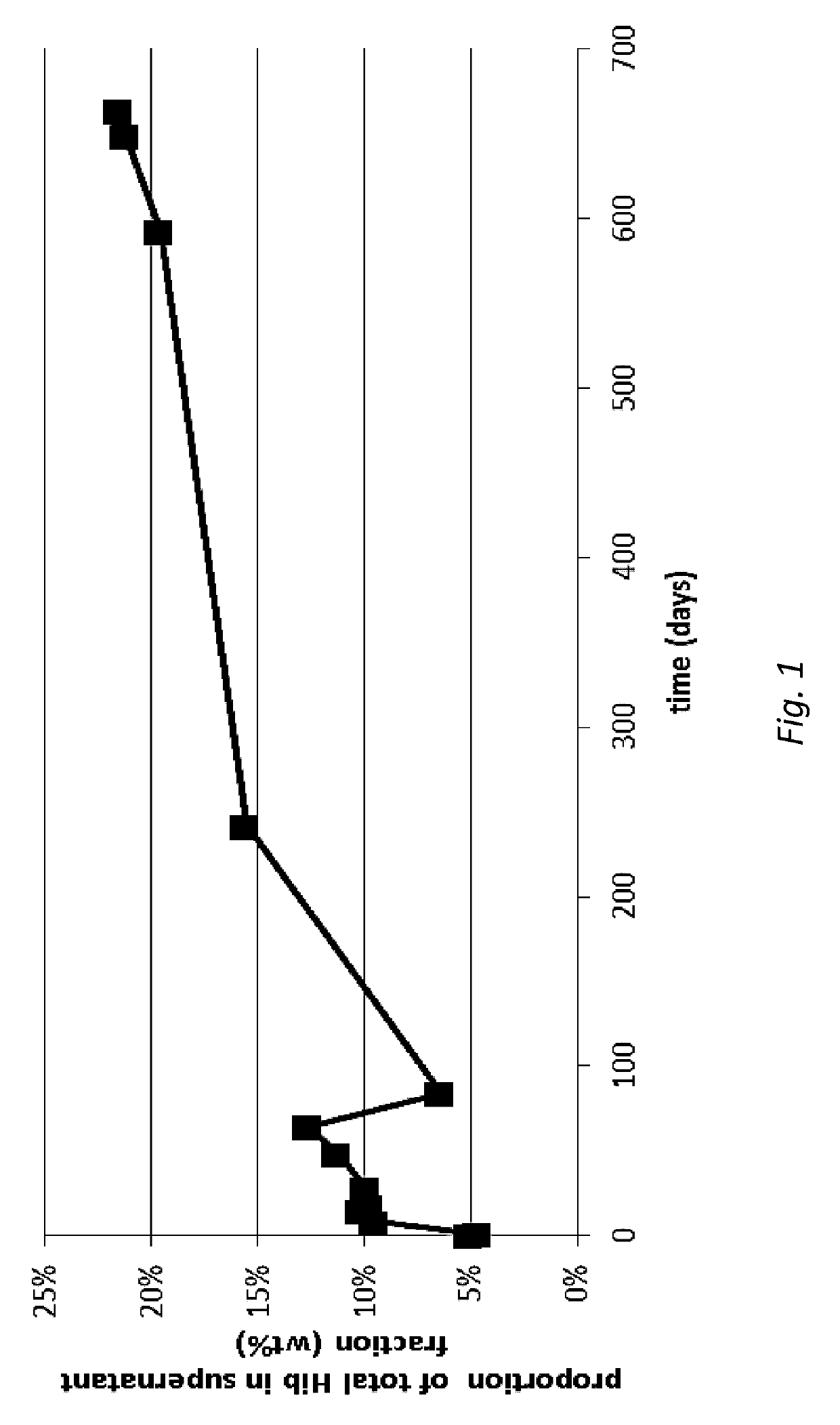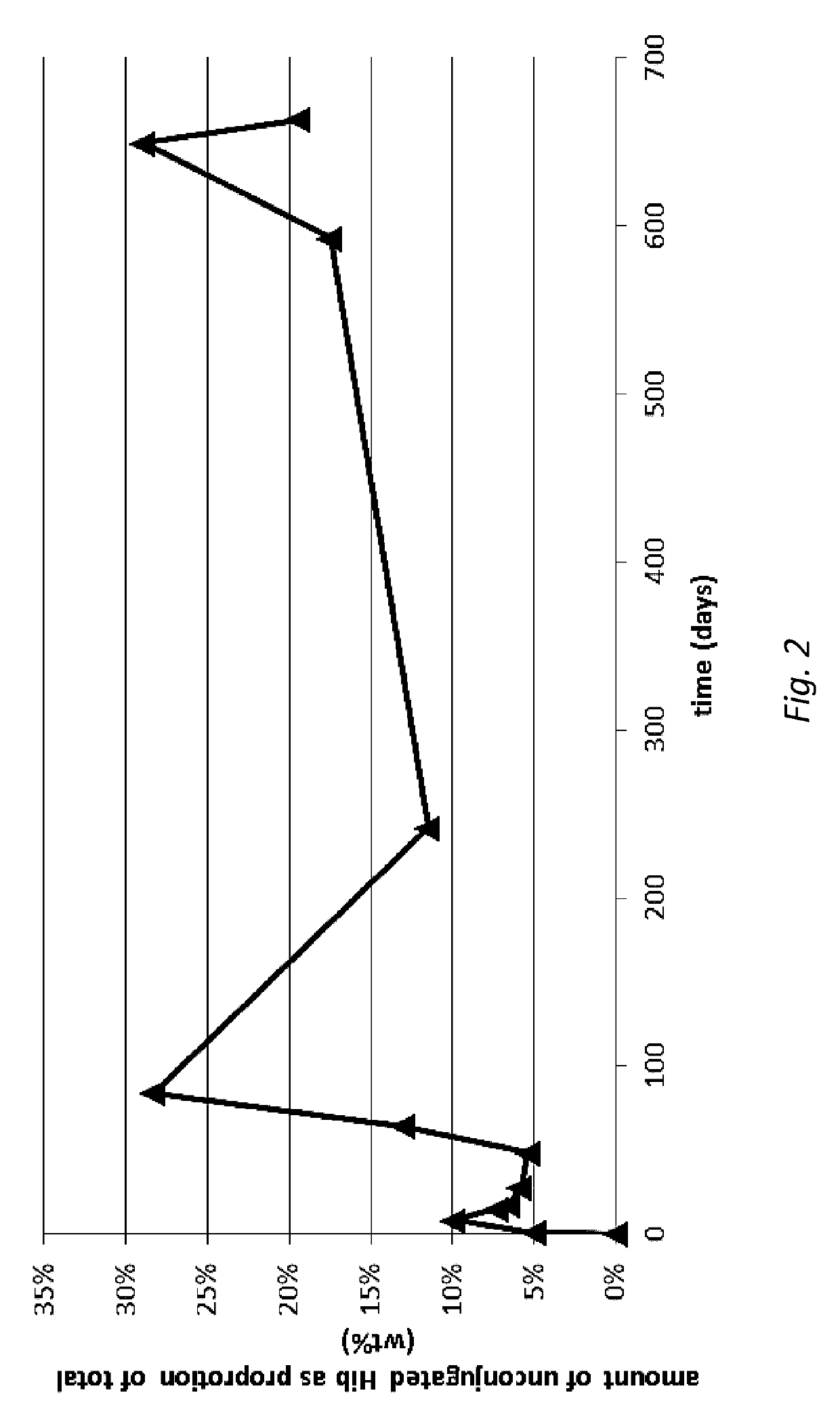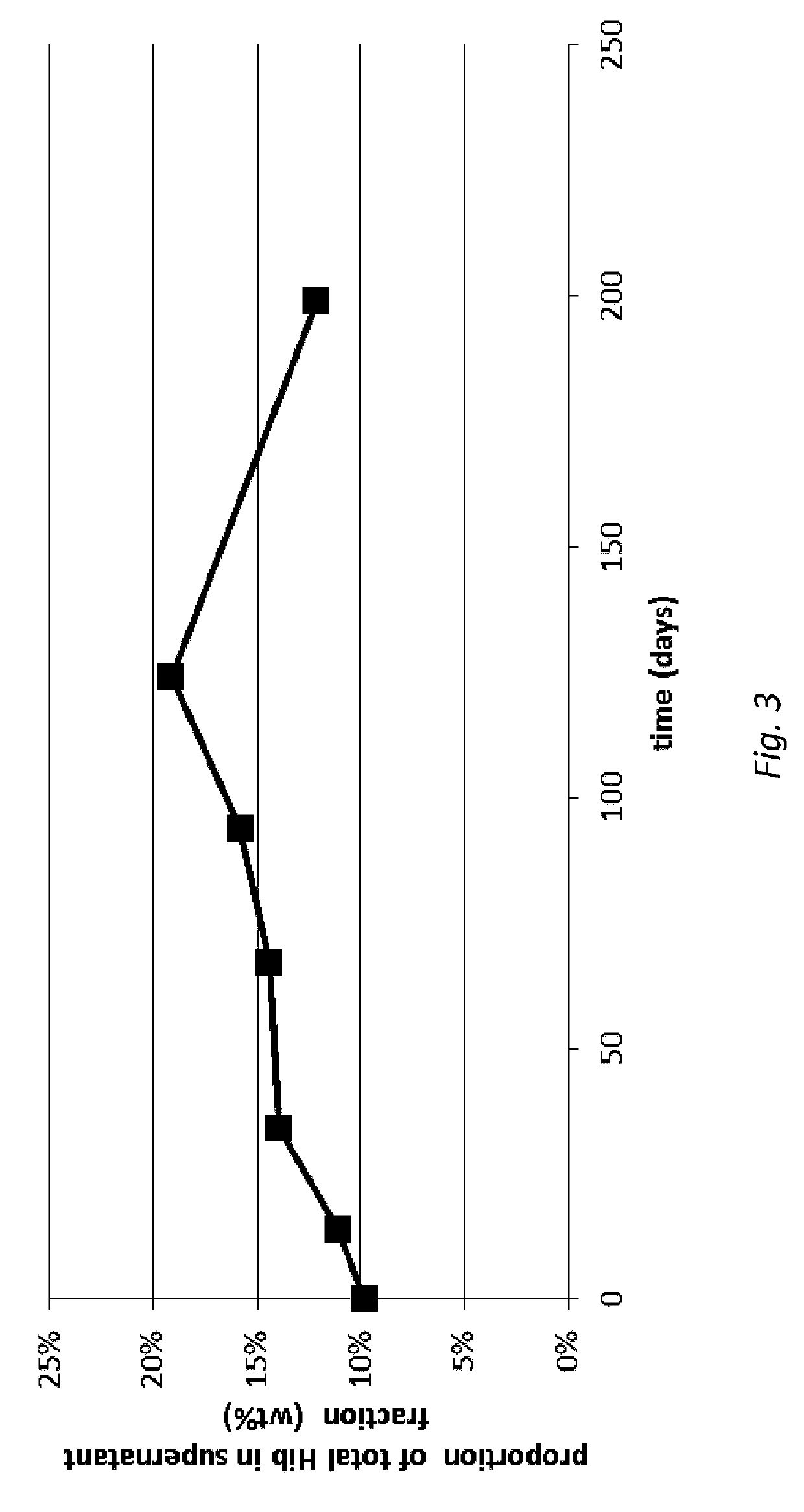Drug delivery particles
- Summary
- Abstract
- Description
- Claims
- Application Information
AI Technical Summary
Benefits of technology
Problems solved by technology
Method used
Image
Examples
example 1
on of Particles and Particle-Containing Formulations
[0127]Particle Fabrication:
[0128]Drug delivery particles were manufactured. First, a series of stock solutions were prepared. A homogeneous aqueous solution of approximately 10 wt % PMMA-co-PMAA (Mw˜125 kDa, MMA:MAA=2:1 molar ratio, Eudragit® S100, Evonik Industries) was made by dissolving the polymer at a pH of approximately 8. A homogeneous aqueous solution of approximately 15 wt % PVP (2.5 kDa, Polysciences, Inc.) was prepared. The concentration of the Haemophilus influenzae type b polysaccharide-tetanus toxoid conjugate (“Hib-TT”) solution was 0.0946 wt % in water.
[0129]The following volumes were combined to produce the particle stock solution: 19.000 mL PMMA-co-PMAA, 12.667 mL PVP, 26.540 mL Hib-TT, and 2.111 mL WFI water. Based on solid components the particle stock solution had the following weight percent ratio: 49.67 wt % PMMA-co-PMAA, 49.67 wt % PVP, and 0.66 wt % Hib-TT. The resulting stock solution was cast at room temp...
example 2
of Example 1 Formulated Particles
[0141]HPAEC-PAD:
[0142]HPAEC-PAD quantification was conducted on samples containing drug delivery particles formulated in storage buffer as per Example 1. Samples were analyzed for total oligo / polysaccharide, which encompassed both conjugated (Hib-TT or Hib-CRM) and unconjugated (‘free’) oligo / polysaccharide (‘Hib’). Some samples were also analyzed for free Hib.
[0143]In the analysis of particle-containing samples, particularly those not containing aluminium adjuvant, both the drug delivery particles and the storage buffer were analyzed for total Hib (conjugated+free). In these cases, the drug delivery particles were recovered from the storage buffer using centrifugation. The storage buffer (supernatant) was removed and retained for analysis. The drug delivery particles (pellet) were re-suspended in the same volume of storage buffer that was recovered in the supernatant. The re-suspended drug delivery particles were then triggered to ‘release’ cargo by...
example 3
on of Further Particles and Particle-Containing Formulations
[0161]Particle Fabrication:
[0162]Drug delivery particles were manufactured as for Example 1, except that the concentration of the Hib-TT stock solution was 0.0957 wt % in water.
[0163]Transition of Particles:
[0164]Under dry conditions (20-30% relative humidity), approximately 800 mg of drug delivery particles were sprinkled onto 40 mL of rapidly stirring 0.1 M sodium succinate pH 4.5 buffer / PEG400, 50 / 50 by volume. The particles were stirred about 5 to 10 minutes. After 5-10 minutes, 4×20 mL 0.2 M sodium maleate pH 6.1 aliquots were added to the suspension, with 1-2 minutes of stirring between each aliquot addition.
[0165]The transition was continued as for Example 1, with minor modifications: after dividing the suspension into four polycarbonate tubes it was pelleted by spinning at 18,000×g for at least 15 minutes at 4° C., and; the subsequent centrifugation was performed at 18,000×g for 5 minutes.
[0166]The particle content ...
PUM
| Property | Measurement | Unit |
|---|---|---|
| Time | aaaaa | aaaaa |
| Length | aaaaa | aaaaa |
| Length | aaaaa | aaaaa |
Abstract
Description
Claims
Application Information
 Login to View More
Login to View More - R&D
- Intellectual Property
- Life Sciences
- Materials
- Tech Scout
- Unparalleled Data Quality
- Higher Quality Content
- 60% Fewer Hallucinations
Browse by: Latest US Patents, China's latest patents, Technical Efficacy Thesaurus, Application Domain, Technology Topic, Popular Technical Reports.
© 2025 PatSnap. All rights reserved.Legal|Privacy policy|Modern Slavery Act Transparency Statement|Sitemap|About US| Contact US: help@patsnap.com



